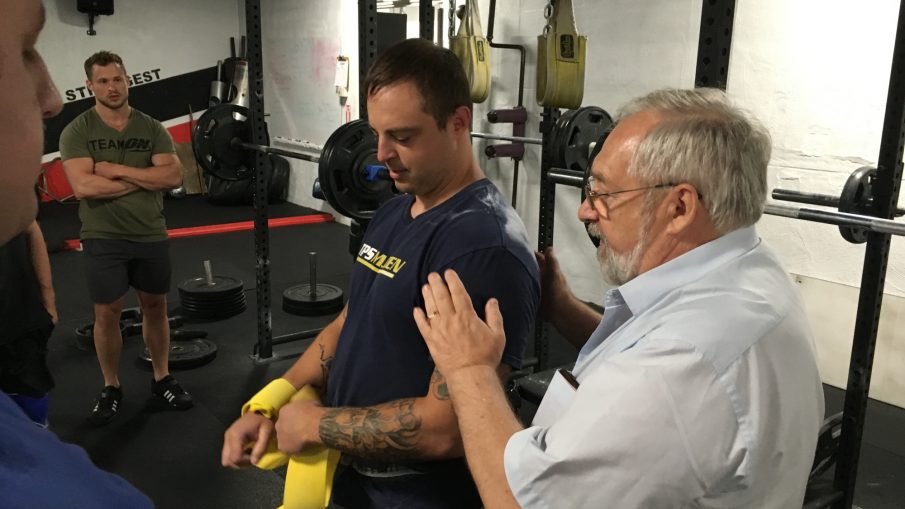Written by: Kevin Cann
This is a question that I receive a lot from my lifters. “Hey Kev, when do we get a deload?” In most cases it is more of a joke than anything else. However, I feel the need to explain the concepts of the deload in a Sheiko based program.
Often times we see deloads put into a program every 3 to 8 weeks or so. The time frame here can vary. A deload week usually consists of a large drop off in volume, and some coaches even preach a large drop off in intensity as well.
The deload is put in place so that the athlete can recover, avoid overuse injuries, and supercompensate and get stronger. All of these things are great ideas. However, there is a better way to implement a deload.
If we set up a program with traditional deloads we are missing opportunities to train and get stronger. We can actually allow one system to recover while we are training another. This is done in a strategic way on a day to day, week to week, month to month, and year to year basis.
My athletes do not get deloads in the traditional sense because I feel that we can be more strategic in our planning that allows the athlete to train more and stay healthy. This will yield greater results in the long run.
This is done by alternating higher volume days, medium volume days, and smaller volume days. Higher volume days are in place to stress the athlete to force adaptations, medium volume days help maintain abilities, and smaller volume days help to aid the recovery of the athlete.
In a program, these volumes will alternate on a day to day, week to week, and month to month basis. Let us look at each one of these examples so that it makes more sense.
On Day 1 we may squat for top sets of 80% for 5 sets of 3. Counting all of the repetitions written out from 50% and higher this is 27 squat lifts for day 1. This is an average volume day for the lifter.
On day 3 the lifter may execute a squat pyramid. This is usually done at 70% of 1RM and the repetition scheme is as follows 3+5+7+9+8+6+4. Including all of the repetitions from 50% and higher, this squat day has 52 lifts. This is a large volume day that will accumulate the most fatigue for the lifter.
On that same day 1 the lifter may have executed a double bench press session. Meaning they would execute bench press before and after squats. This may total around 50 lifts within the bench press for the lifter. This makes this a large volume bench press day.
On day 3 the lifter may execute something like 2 second pause bench press at 75% for 5 sets of 2 repetitions. This would only be a 20 lift bench press session. This is a small volume day for the bench press.
So, day 1 we had a high volume bench press day and a medium volume squat day. On day 3 we had a high volume squat day and a small volume bench press day. Even though the bench press is getting stressed, the systems involved with the squat are not accumulating high levels of fatigue.
This allows the lifter to execute the squat pyramid with no issues on day 3. Day 1 was a high volume bench press day that accumulated high levels of fatigue in those systems. That is why day 3 is lighter. Day 3 is actually a recovery day for the bench press.
Day 4 for most lifters tends to be their second deadlift day of the week. This may or may not include some bench press and the deadlift is often light technique work. This day in general is a small volume day for recovery. If it happens to be a higher volume day, the next week will be a very low volume day.
On a week to week basis, some weeks will have higher volumes, some medium volumes, and others lower volumes. As volume decreases, intensity tends to increase. In other words, one week might have more lifts, but the next week may be a little heavier.
On a month to month basis our competition schedule drives the lower volume months. When we peak for a meet we see a decrease in volume and a rise in intensity. Average intensity remains the same, but top sets are performed at higher intensities.
The block after the competition tends to be very light with lots of variation. Variation is another way that we can aid the athlete in recovery. A slight change to the exercise actually allows some motor units to recover. This also helps keep the athlete healthy.
Variation can also allow us to use lighter weights, but increase the stress index enough to yield strength gains. A pause squat at 75% is harder than 75%. This also helps the athlete work on technical mistakes within the lifts. It also helps to keep bar weight down, making it easier to recover from.
Variations should be performed as close to the competition lifts as possible. This is for maximal carryover to the competition lifts. This means for the squat they will be performed low bar, normal stance, with a straight bar, bench press with competition grip, and deadlift with competition stance.
On top of this the athletes are encouraged to eat enough and sleep as much as they can. I find this to be a much more productive way to get maximal results for all of my athletes. This a complex topic and not as simple as taking an easy week every few. We want to train as hard as we can to yield maximal results.

